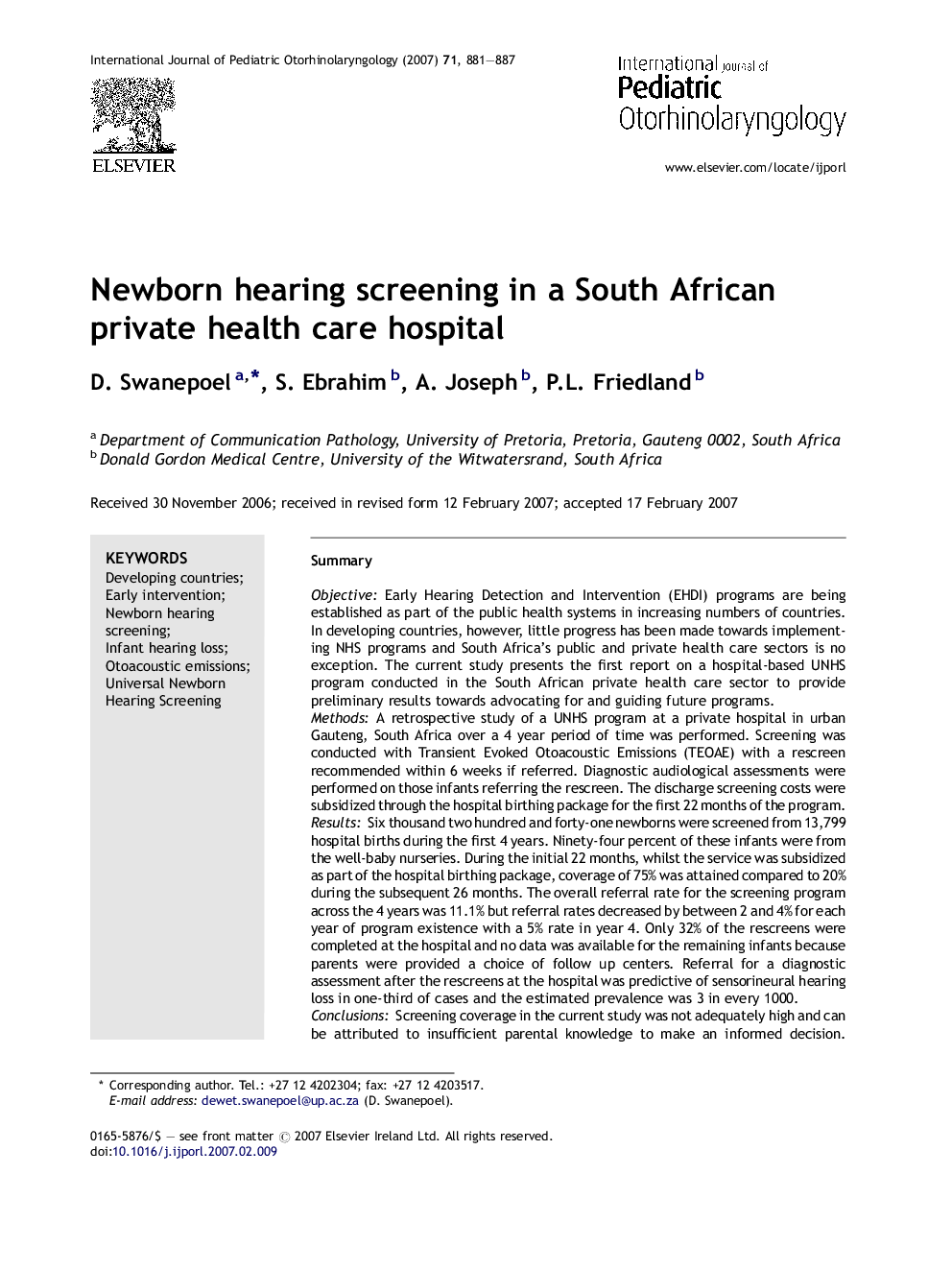| کد مقاله | کد نشریه | سال انتشار | مقاله انگلیسی | نسخه تمام متن |
|---|---|---|---|---|
| 4114165 | 1606094 | 2007 | 7 صفحه PDF | دانلود رایگان |

SummaryObjectiveEarly Hearing Detection and Intervention (EHDI) programs are being established as part of the public health systems in increasing numbers of countries. In developing countries, however, little progress has been made towards implementing NHS programs and South Africa's public and private health care sectors is no exception. The current study presents the first report on a hospital-based UNHS program conducted in the South African private health care sector to provide preliminary results towards advocating for and guiding future programs.MethodsA retrospective study of a UNHS program at a private hospital in urban Gauteng, South Africa over a 4 year period of time was performed. Screening was conducted with Transient Evoked Otoacoustic Emissions (TEOAE) with a rescreen recommended within 6 weeks if referred. Diagnostic audiological assessments were performed on those infants referring the rescreen. The discharge screening costs were subsidized through the hospital birthing package for the first 22 months of the program.ResultsSix thousand two hundred and forty-one newborns were screened from 13,799 hospital births during the first 4 years. Ninety-four percent of these infants were from the well-baby nurseries. During the initial 22 months, whilst the service was subsidized as part of the hospital birthing package, coverage of 75% was attained compared to 20% during the subsequent 26 months. The overall referral rate for the screening program across the 4 years was 11.1% but referral rates decreased by between 2 and 4% for each year of program existence with a 5% rate in year 4. Only 32% of the rescreens were completed at the hospital and no data was available for the remaining infants because parents were provided a choice of follow up centers. Referral for a diagnostic assessment after the rescreens at the hospital was predictive of sensorineural hearing loss in one-third of cases and the estimated prevalence was 3 in every 1000.ConclusionsScreening coverage in the current study was not adequately high and can be attributed to insufficient parental knowledge to make an informed decision. Improvements in program efficiency over time also suggest that pilot programs must be monitored over sufficiently long periods of time to allow observations of optimal efficiency. Initial referral rates and prevalence data indicate a large hearing loss burden and the capacity to implement increasingly efficient programs in South Africa.
Journal: International Journal of Pediatric Otorhinolaryngology - Volume 71, Issue 6, June 2007, Pages 881–887